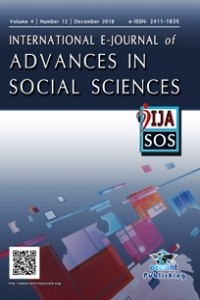RISING GEO-STRATEGIC COMPETITION BETWEEN UNITED STATES AND CHINA: A CASE STUDY OF SOUTH ASIA IN THE EMERGING GLOBAL ORDER
Abstract
The South Asian region is characterized by the
versatile nation state system with having greater economic prospects and has a
unique rank in the world. United States and China are not only the sheer
competitors across the globe but are also the major contenders of South Asian
geo-strategic, political and economic affairs. Their intensifying interests in
the region are not only due to the emerging global security architecture but
also because of the geo-strategic significance of the South Asian region. China
seems vulnerable to the United States military presence in the region and
China’s rapid economic growth and piling up of military muscle seemingly intent
to counter the United States in the region. China, through its economic and
military advancements has positioned itself as the principal regional power and
further intends to accomplish its national interests by strengthening security
and defence requirements. The presence of the other major regional powers like
Pakistan and India also amplify the geographical prominence and the US-China
interest in South Asia put it in the forefront due to which the South Asian
region strategically have become much more interested during the emerging world
order for both US and China, United States also regards the rise of China as a
vital global participant and invites it to peacefully play its role in the
modification of the future world order in this connection this paper will
highlight the both super powers policy of context of power transition
contentment and counter-contentment either the United States still has the
strategy to contain China and if it is so, how China is counter-containing the
United States to emerge as a global power politics towards south Asian region.
Keywords
Contentment Dominancy Emerging Geo-strategic Global Order Power Politics South Asia Transition
References
- Bergerson, Kristien. (2016). China’s efforts to counter U.S. forward presence in the Asia Pacific. U.S.-China Economic and Security review Commission. March 15, 2016. pp. 3-4.Horizons. (2015). The future of Asia: implication for Canada. Canada: Geostrategic cluster finding. p. 3.Kapila, Subhash. (April 17, 2012). The global power shift to Asia: geostrategic and geopolitical implications. Al Jazeera Centre for Studies. p. 2-4.Karim, Mohd Aminul. (2012). Strategic vision of China and the United States in South Asia and beyond. The Korean Journal of Defense Analysis Vol, 24, No. 2, June 2012, pp. 176-77.Leonard, Mark. (January, 2016). Geo-economics with Chinese characteristics: how China’s economic might is reshaping world politics. Geneva, Switzerland: World Economic Forum, pp. 2-3.Lia, David. (December, 2011). The United States and China in power transition. Washington D. C.: Strategic Studies Institutes. p. 1-19.Mahbubani, Kishore. (January, 2016). China’s role in Asia Pacific. Geneva, Switzerland: World Economic Forum, Geo-economics with Chinese characteristics: how China’s economic might is reshaping world politics. Organski and Kugler, J. (1958). The power transition: a retrospective and prospective evaluation. pp. 172-73.Rediker, Douglas. E. Elizabeth, Levi, Michael. (January, 2016). The geo-economic implications of China’s changing growth strategy. Geneva, Switzerland: World Economic Forum, Geo-economics with Chinese characteristics: how China’s economic might is reshaping world politics. January, 2016.Sutter, Brown, et al. (2013). Balancing acts: the U.S. rebalancing and Asia-Pacific stability. Washington D.C.: Sigur Center for Asian Studies. pp. 1-13.
Abstract
References
- Bergerson, Kristien. (2016). China’s efforts to counter U.S. forward presence in the Asia Pacific. U.S.-China Economic and Security review Commission. March 15, 2016. pp. 3-4.Horizons. (2015). The future of Asia: implication for Canada. Canada: Geostrategic cluster finding. p. 3.Kapila, Subhash. (April 17, 2012). The global power shift to Asia: geostrategic and geopolitical implications. Al Jazeera Centre for Studies. p. 2-4.Karim, Mohd Aminul. (2012). Strategic vision of China and the United States in South Asia and beyond. The Korean Journal of Defense Analysis Vol, 24, No. 2, June 2012, pp. 176-77.Leonard, Mark. (January, 2016). Geo-economics with Chinese characteristics: how China’s economic might is reshaping world politics. Geneva, Switzerland: World Economic Forum, pp. 2-3.Lia, David. (December, 2011). The United States and China in power transition. Washington D. C.: Strategic Studies Institutes. p. 1-19.Mahbubani, Kishore. (January, 2016). China’s role in Asia Pacific. Geneva, Switzerland: World Economic Forum, Geo-economics with Chinese characteristics: how China’s economic might is reshaping world politics. Organski and Kugler, J. (1958). The power transition: a retrospective and prospective evaluation. pp. 172-73.Rediker, Douglas. E. Elizabeth, Levi, Michael. (January, 2016). The geo-economic implications of China’s changing growth strategy. Geneva, Switzerland: World Economic Forum, Geo-economics with Chinese characteristics: how China’s economic might is reshaping world politics. January, 2016.Sutter, Brown, et al. (2013). Balancing acts: the U.S. rebalancing and Asia-Pacific stability. Washington D.C.: Sigur Center for Asian Studies. pp. 1-13.
Details
| Primary Language | English |
|---|---|
| Journal Section | Articles |
| Authors | |
| Publication Date | January 10, 2019 |
| Submission Date | October 30, 2018 |
| Published in Issue | Year 2018Volume: 4 Issue: 12 |
Cited By
Contact: ijasosjournal@hotmail.com
The IJASOS Journal's site and its metadata are licensed under CC BY
Published and Sponsored by OCERINT International © 2015- 2025


